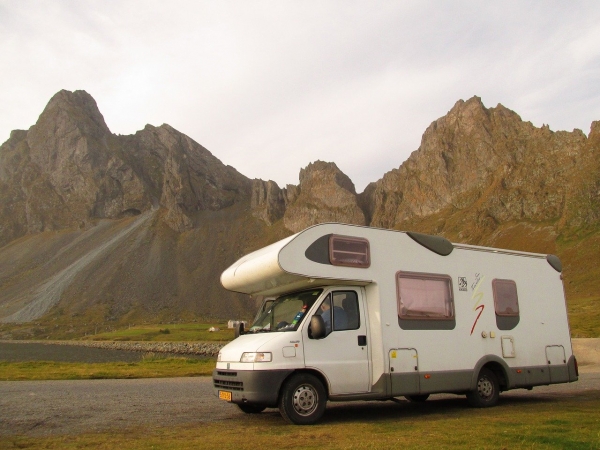These underhood and under-vehicle items ensure safety and help your vehicle last longer. Maintenance procedures can add up each year, but preventive maintenance is never going to surpass what you would shell out to replace a major component—or your rig—due to a lack of routine upkeep.
If you got a late start this year and are eager to hit the road, or if you had to delay maintenance because your mechanic’s shop was closed temporarily, do your spring checklist now that you can.
Class A, B or C motorhomes will have many of the same mechanical needs as a tow vehicle, so let’s take a look at what you shouldn’t ignore.
First, things you can check yourself:
Lights
Make sure all lights work, including brake lamps, running lights and turn signals, and replace worn bulbs. Clean clouded headlight covers with a commercial product or have a technician do it.
Vehicle Battery
You should have had your battery on a maintenance charger or at least a trickle charger to keep it from excessively discharging. If not, you may need a jump to get going. Check with a multimeter to see if the battery holds a charge while the vehicle is running. Also check to see if it produces adequate cranking amps—close to its rating—when you’re starting the engine.
If your battery has caps for adding water, use only distilled water to avoid deposits. Clean battery posts by removing the cables and using a wire brush. Tighten reattached cables. These deposits are corrosive, so wear protection for your hands and eyes.
Tires
Check pressure and bring it up to proper levels. If one tire is considerably low, have it checked for leaks or damage. Inspect all tires for cracks, which may indicate dry rot from UV rays; uneven wear, which may signal a need for an alignment or worn suspension parts; and bubbles, which mean a new tire is a must.
Remember to check the spare.
Belts
Inspect for cracks or wear. Worn belts can fail and leave you stranded, so have deficient belts replaced.
Wipers, Washer
Make sure wiper blades remain free of cracks. Even a small tear can lengthen quickly, so replace before you set out. Test the washer system and the fluid level, and make sure wiper blades clean the windshield without smearing.
Hoses
Hoses should be free of cracks and leaks. Squeeze radiator hoses to make sure they remain pliable. Hoses that feel or appear brittle or hard should be replaced. Your vehicle has more than a top and lower radiator hose; smaller hoses connect other components, including the heater. If you need to replace a radiator hose, chances are that other hoses the same age may be weak; if you replace one, replace them all.
Wiring
Many wires these days are sheathed in soy-derived insulation, making wire inspections critical. Rodents like the soy insulation and often chew it. Replace frayed or chewed wires. After you replace wires, and even if you don’t, apply a rodent repellent, which may have to be refreshed during the season.
Road Test
A good drive will tell you about several things:
- Brakes. Are they quiet, smooth and free of a tendency to pull to one side when stopping? Don’t worry about a light coating of rust on the brake rotors, or discs. That’s typical after months of sitting. Driving a few miles wears the rust off.
- Suspension. Are bumps damped satisfactorily or does the vehicle pitch after encountering a road irregularity?
- Steering. Does the vehicle steer true? Is the steering wheel free of abnormal vibrations?
- Exhaust. Does it sound normal? If it sounds loud for short periods, especially after hitting bumps or turning, there may be a loose connection or rot.
- Air conditioning. Park and let the vehicle idle with the air conditioner running. Make sure it continues to blow cold air.
- Cooling system. When you climb a hill or park with the vehicle idling, the water temperature should stay within the normal range.
Some maintenance items are best left to professionals:
Shocks, Springs, Alignment
Have your mechanic make sure shocks are not leaking and are damping properly. A lot rides on springs, so they should be checked for integrity. Have a mechanic make sure there’s no excess play in the tie rods and ball joints. Have him check that CV joints are sound.
Don’t skip an alignment if needed. Misalignment can wear out tires in a few thousand miles.
Exhaust
An expert eye on your exhaust is worthwhile. Stainless steel exhausts last a long time, but systems can be damaged by rocks and debris. Remember: A broken exhaust can be deadly if it allows toxic fumes to enter the cabin.
Brakes
Make sure the pads have a sufficient percentage remaining to hold up to the stresses of stopping all that RV weight. Replace if needed.
Cooling System
Have the coolant inspected for rust, which may develop after several seasons of use, in some makes more than others. A radiator flush and coolant replacement will solve the issue.
